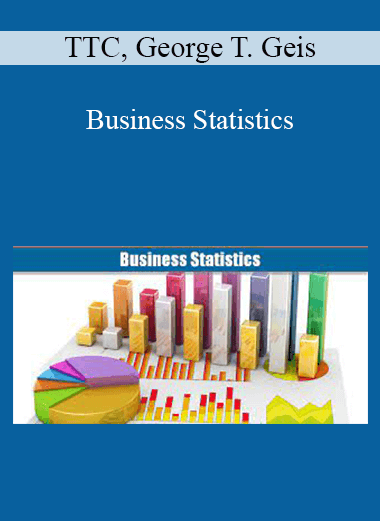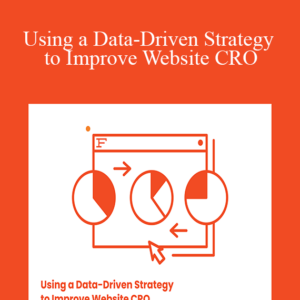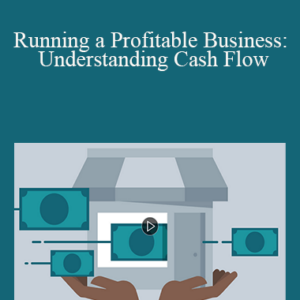Business Statistics
In our tightly wired world, business executives make decisions under pressure. Almost always, these decisions must be made with less than complete information.
This course is about how to effectively use data that is currently available (or can be obtained within a reasonable time frame and cost) to improve business decision-making.
Quantitative methods such as statistical analysis never eliminate the vital role that seasoned business intuition plays. Nevertheless, analytical techniques are a central part of many decisions.
Statistics Alive in the Context of Life and Business
Professor George T. Geis of the UCLA Business School uses business examples from functional areas such as finance, marketing, human resources, and operations to illustrate the role of data analysis in decision-making.
“This course is not designed to be a dry, sleepy-time set of abstract, mathematical lectures,” he says. “The goal is to make statistics come alive in the context of life and in the context of real business problems demanding a solution.”
Today, the burden of computation has largely been eliminated through personal computers. Businesspeople are now free to focus on probing issues and search for creative solutions. This course illustrates the use of computer-generated output that promotes visualization of data.
In fact, we illustrate in this course how statistics and probability can effectively work together with managerial intuition in business problem solving.
“Students tell me that statistics was obscure and inaccessible for them as undergraduates,” says Professor Geis. “On the first day of class, they enter my MBA course on Statistics and Data Analysis prepared for the worst. Fortunately, I am often able to help them build intuition for statistics, appreciate how the content can be applied, and they actually enjoy the experience.
“Whatever previous experience you have had with statistics (if any), our main objective will be to make the content useful to you in business decision-making and relevant to decisions we all make in everyday life.”
Your Overview of Probability and Statistics
Professor Geis explains how skill in obtaining and analyzing data can provide a business leader with significant competitive advantage.
We must make decisions based on inferences from the data we have. Statistics help in developing a model for refining business decisions.
16 Lectures
In Lecture 1 Professor Geis compares and contrasts statistics with probability. He also details and illustrates the major activities of statistical analysis.
In Lecture 2 we discuss the purpose of descriptive statistics. What are some important ways to view and summarize data? Why is variability so important in analyzing a business situation?
Lecture 3 explores probability concepts. Probability plays an important role in analyzing business situations and in refining intuition. In business situations, complexity is often the norm. Therefore, in order for a model to be adequate, it must have some room for complexity and subtlety.
Lecture 4 combines event probabilities. We discuss how to obtain probabilities associated with more complex events. We introduce the notion of simulation, how it relates to probability, and how it can be used in business decision-making. We develop the intuition behind conditional probability, independence, and mutual exclusivity.
Lecture 5 shows how simulation builds on our understanding of probability. We review the steps in setting up a Monte Carlo simulation. Understanding how probabilities work and distributions are built is an essential element to building a good simulation model.
In Lecture 6 we build intuition about the notion of a random variable. We differentiate between discrete and continuous random variables and related distributions. We show how distributions are related to business problem-solving and to simulation. Discrete and continuous distributions enable us to mathematically calculate business solutions and to simulate business problems.
Lecture 7 discusses the use of discrete distributions. We give special attention to two particularly useful discrete distributions. The binomial distribution plays a pivotal role in business situations that involve percentage estimates. The Poisson distribution is useful in modeling the number of times an event is likely to happen, given a constant average rate of occurrence.
In Lecture 8 you see how the normal distribution plays a very special role in statistics and probability. In this lecture we take a look at a continuous distribution known as the normal distribution. We provide examples to illustrate how the standardized normal distribution is used in business.
Lecture 9 answers questions about sampling. What are the benefits of random sampling in business analysis and decision-making? What is a sampling distribution and why is it important? What is a simple random sample and how do you select one? The issue of whether or not a sample is representative of the population is a central problem addressed by statistics.
Lecture 10 looks at the central limit theorem. This theorem provides us with one of the most important results in statistics. What is the central limit theorem and how is it useful in business analysis? How does it help us work with sampling distributions for statistics such as the sample mean and sample proportion?
In Lecture 11 we explain the intuition behind confidence intervals and how they are used in a business context. In business, we often need to estimate the characteristics of a population based on information provided by a sample chosen and analyzed to give us a “good enough” estimate. Confidence intervals translate this “good enough” estimate into a mathematical statement of the level of confidence.
Lecture 12 continues our discussion of confidence intervals. We show how to construct confidence intervals for parameters other than the mean. We also consider what is necessary if confidence intervals are to be useful.
In Lecture 13 we explore the use of hypothesis testing in business. In a business situation our data is limited to a sample of reality. Statistical techniques can test how large a part chance plays in the results reflected by the designated sample. In designing a hypothesis test, we intend to determine whether or not a claim, such as response rate from an advertising campaign, should be allowed to stand.
In Lecture 14 we discuss how linear regression is a method for modeling the relationship between two variables. Examples are advertising and sales or training and job performance. Regression is a widely used technique and often provides a useful mathematical formulation of a real-world situation.
We find in Lecture 15 that just because we run a regression does not guarantee that it is useful or valid. A regression may be valid only for a small range of values. In this lecture, we explain how to determine whether or not the regression equation is meaningful and valid for business analysis. The goal of regression is not just to fit a line to a set of data points but to be able to use the line to forecast and predict.
Lecture 16 provides an introduction to multiple regression. Multiple regression is an extension of simple linear regression in that more than one independent variable is used in attempting to explain variation in the dependent variable. We also explore the use of dummy variables in regression models. In business situations,when analytical and statistical modeling are combined with business experience and intuition, more effective decision-making is often the result.
“Should I buy Audio or Video?”
This course is only available on videotape and includes more than 200 computer-generated graphics illustrating lecture overviews, term definitions, statistical data sets and models, statistical processes, hypothetical examples, and graphs. Professor Geis also uses a chalkboard and a whiteboard to further illustrate statistical data sets, hypothetical examples, statistical processes and equations, charts, and graphs.
Get download TTC, George T. Geis – Business Statistics at coursesblock.com right now!
Delivery Method
– After your purchase, you’ll see a View your orders link which goes to the Downloads page. Here, you can download all the files associated with your order.
– Downloads are available once your payment is confirmed, we’ll also send you a download notification email separate from any transaction notification emails you receive from coursesblock.com
– Since it is a digital copy, our suggestion is to download and save it to your hard drive. In case the link is broken for any reason, please contact us and we will resend the new download link.
– If you cannot find the download link, please don’t worry about that. We will update and notify you as soon as possible at 8:00 AM – 8:00 PM (UTC 8).
Thank You For Shopping With Us!





![[Download Now] Luigi Ontiveros – Wholesale Business Blueprint](https://coursesblock.com/wp-content/uploads/2024/10/Luigi-Ontiveros-Wholesale-Business-Blueprint-1-300x300.jpg)

